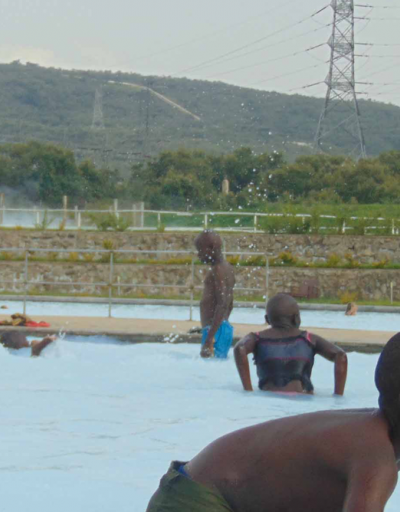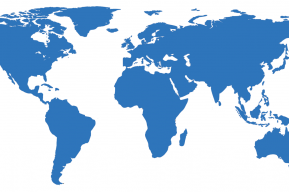Countries in Central and East Africa (chapter 19) are taking advantage of more widespread telecommunications infrastructure to introduce e-governance in a drive to improve public services and make it easier to do business, as part of preparations for the future African Continental Free Trade Area. This project overlaps with efforts to reduce the cost of telecommunications, improve the electricity supply and develop roads, railways, airports and ports.
Strenuous efforts are being made to develop small and large hydropower projects, solar and wind parks and geothermal plants. The Grand Ethiopian Renaissance Dam is nearing completion and, in Kenya, geothermal power now reaches 35% of households.
Climate-smart agriculture, agro-ecology, biodiversity protection, medicine and water management are the focus of centres of excellence established in Ethiopia, Kenya and Uganda in 2017 under a World Bank project. Innovative drug development is the focus of one of the centres in Ethiopia, which has hosted the Africa Centre for Disease Control and Prevention since 2016 and plans to develop a pharmaceutical industry.
For their part, the World Bank centres of excellence in Rwanda (est. 2017) are focusing on energy research, mathematics, the Internet of Things and data science. Rwanda also hosts the East African Institute for Fundamental Research, established in 2018 through a project with the UNESCO Abdus Salam International Centre for Theoretical Physics; its research and teaching focus extends to AI-related areas.

Five out of 15 countries have explicit STI policies: Burundi, Ethiopia, Kenya, Rwanda and Uganda. Many have implicit STI policies, such as for energy, education or the digital economy. Examples are Rwanda’s ICT in Education Policy (2016), the Digital Cameroon 2020 Strategic Plan (2017), Uganda’s National 4IR Strategy (2020) and Chad’s Energy Policy (2019) stressing the country’s potential for renewable energy.
In sub-Saharan Africa, it is Cameroon which has the greatest volume of publications per million inhabitants on AI and robotics, as well as on energy-related topics; its publication intensity is even four times that of South Africa in both areas.
By 2019, there were 28 active tech hubs in Cameroon. Other Central African countries have five or fewer hubs. In all, there were 166 active technology hubs in 12 Central and East African countries in 2020. Four out of ten (42%) were located in Kenya alone. Governments need to support this vibrant start-up ecosystem, including by making it easier and less costly for inventors to register their intellectual property in Africa.
- Figure 19.1: Socio-economic trends in Central and East Africa
- Table 19.1: Socio-economic indicators for sub-Saharan Africa, 2019 or closest year
- Table 19.2: Investment in public services, research and agriculture in sub-Saharan Africa, 2018 or closest year
- Table 19.3: The African Union’s 14 flagship projects
- Table 19.4: Centres of excellence established in East Africa in 2017
- Figure 19.2: Status of STI policy development in Central and East Africa, 2020
- Figure 19.3: Trends in GERD and researchers in Central and East Africa
- Figure 19.4: Trends in higher education in Central and East Africa
- Figure 19.5: Trends in scientific publishing in Central and East Africa
- Figure 19.6: Trends in scientific publishing on SDG-related topics in sub-Saharan Africa
- Figure 19.7: Number of IP5 patents granted to inventors from Central and East Africa, 2015–2019
- Figure 19.8: Renewable sources of electricity in Central and East Africa
- Box 19.1: Kenya now eighth in the world for geothermal power
- Box 19.2: The Africa Centres for Disease Control and Prevention
- Box 19.3: Towards a single Pan African intellectual property system
- Box 19.9: A subregional centre of excellence in theoretical physics






